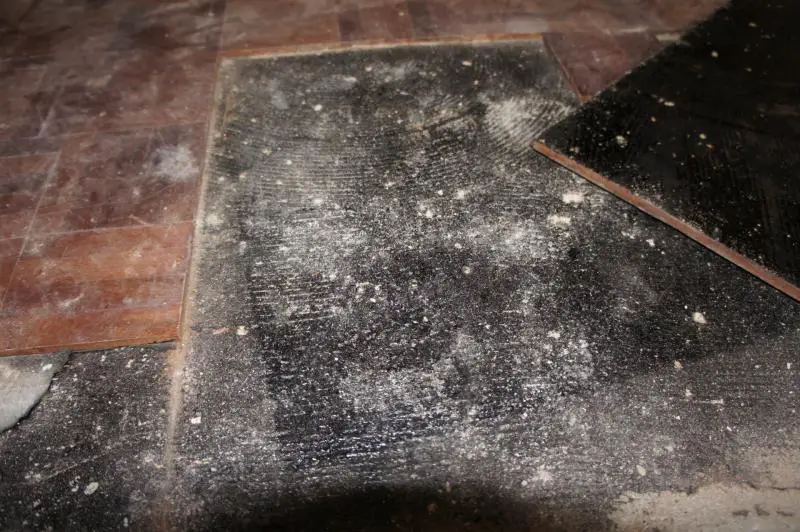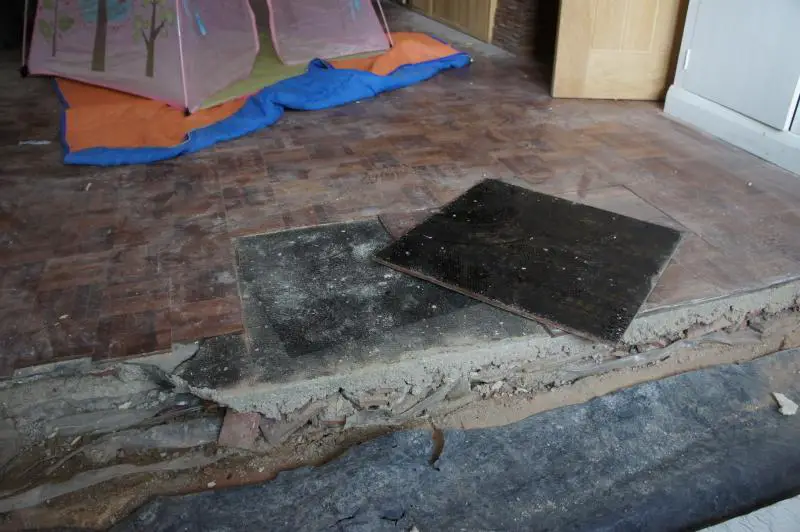I have recently had one of my rooms extended. The room has parquet flooring. It is finger parquet that comes in 460mm squares and is about 10mm thick. It started from where the old wall used to be and is gradually creeping further and further in to the room. I haven't extended the floor into the new extension yet but I'm now worried that it will all have to be relayed. Has anyone got any idea what's causing this? There was a leek from the radiator when it was removed from the old wall and this does seem to be where the problem originates from. What I don't understand is why it still sems to be progressing across the rest of the floor. Any ideas ? 
You are using an out of date browser. It may not display this or other websites correctly.
You should upgrade or use an alternative browser.
You should upgrade or use an alternative browser.
Help! - Parquet floor is lifting up
- Thread starter jonnyiles
- Start date
Sponsored Links
Sorry M8 but I think you posted the wrong forum as it’s not really a Tiling problem. I'll allert "Mods" to move to "floors" etc. My guess would be you’ve got damp/water creeping along there & causing problems but you need an expert like WoodYouLike to advise you.
I thought I had posted it under the floor section? Is this specifically a tiling section?
Sponsored Links
Not sure if I completely understand.
The mosaic is loosing its grip from the underfloor in the new or in the old area?
Has there been any new concrete/screed poured first? How was the mosaic installed - with what adhesive I mean.
Is it old or newly installed mosaic?
The mosaic is loosing its grip from the underfloor in the new or in the old area?
Has there been any new concrete/screed poured first? How was the mosaic installed - with what adhesive I mean.
Is it old or newly installed mosaic?
The mosaic is the old floor, that was fine before the building work began. The new area hasn't been laid yet. The screed for the new area hasn't even been laid. The old floor was laid with some kind of black glue - it doesn't look brittle enough to be bitumen. The glue has obviously been applied with some kind of notched trowel but very thinly.
I thought so. Bitumen, the old adhesive, is getting brittle and the leak hasn't helped.
It is loosing the grip with the mosaic and will keep doing this.
Lift the floor, remove all traces of the tar, repair the concrete where needed and fix down again with modern adhesive (F.Ball B91 is a good one for this)
It is loosing the grip with the mosaic and will keep doing this.
Lift the floor, remove all traces of the tar, repair the concrete where needed and fix down again with modern adhesive (F.Ball B91 is a good one for this)
Holy flood gates. That sounds like a big job. Do I need to lay a liquid DPM as well? And will I need to shot blast the bitumen off or just scrape off as much as I can? Thanks for your help
woodyoulike. Just out of interest how do you know if the glue is bitumen and not something like Leccol5500 which is also black isn;t it? I'm sure I've used a modern dipping glue to stick down some blocks before. Could it be this? How would I tell and does it make any difference anyway? ie. could I remove Leccol5500 more easily?
Lecol5500 is not the black stuff, it was brownish/creamish and not being produced any longer.
How thick is the bitumen layer? It's the older bits I'm concerned about, not the dipping bitumen related adhesive you used for a few blocks. Or did you install the whole mosaic floor yourself?
How thick is the bitumen layer? It's the older bits I'm concerned about, not the dipping bitumen related adhesive you used for a few blocks. Or did you install the whole mosaic floor yourself?
I didn't install the mosaic. I've installed some parquet in another room which is where I used some kind of black dipping adhesive - can;t remember what it was but thought it was lecol.
The mosaic is laid with a very thin layer of the black stuff - it's not brittle which is why I wondered if it actually was bitumen.
By the way - do you know where I can get some additional mosaic? These don't seem to be very common - they are arranged in 460mm squares and are onyl about 6mm think (each finger is 114mm by 23mm) - not very nice really but since I've only got to add on about 6m2 I don;t really want to replace the rest of the floor which is about 30m2.
Thanks for your continued help
The mosaic is laid with a very thin layer of the black stuff - it's not brittle which is why I wondered if it actually was bitumen.
By the way - do you know where I can get some additional mosaic? These don't seem to be very common - they are arranged in 460mm squares and are onyl about 6mm think (each finger is 114mm by 23mm) - not very nice really but since I've only got to add on about 6m2 I don;t really want to replace the rest of the floor which is about 30m2.
Thanks for your continued help
If the tar is only on the back of the mosaic you might be in luck. Some mosaic came with tar paper to be stuck down on the concrete.
You could have been using Lecol F21, that's a dipping adhesive.
Have a look here (7.5mm thick, yours could have been sanded down once?), various wood-species, but all 480mm (4 blocks by 4 blocks of 5 fingers)
You could have been using Lecol F21, that's a dipping adhesive.
Have a look here (7.5mm thick, yours could have been sanded down once?), various wood-species, but all 480mm (4 blocks by 4 blocks of 5 fingers)
DIYnot Local
Staff member
If you need to find a tradesperson to get your job done, please try our local search below, or if you are doing it yourself you can find suppliers local to you.
Select the supplier or trade you require, enter your location to begin your search.
Please select a service and enter a location to continue...
Are you a trade or supplier? You can create your listing free at DIYnot Local
Sponsored Links
Similar threads
- Replies
- 5
- Views
- 2K
- Replies
- 1
- Views
- 1K
- Replies
- 5
- Views
- 11K



